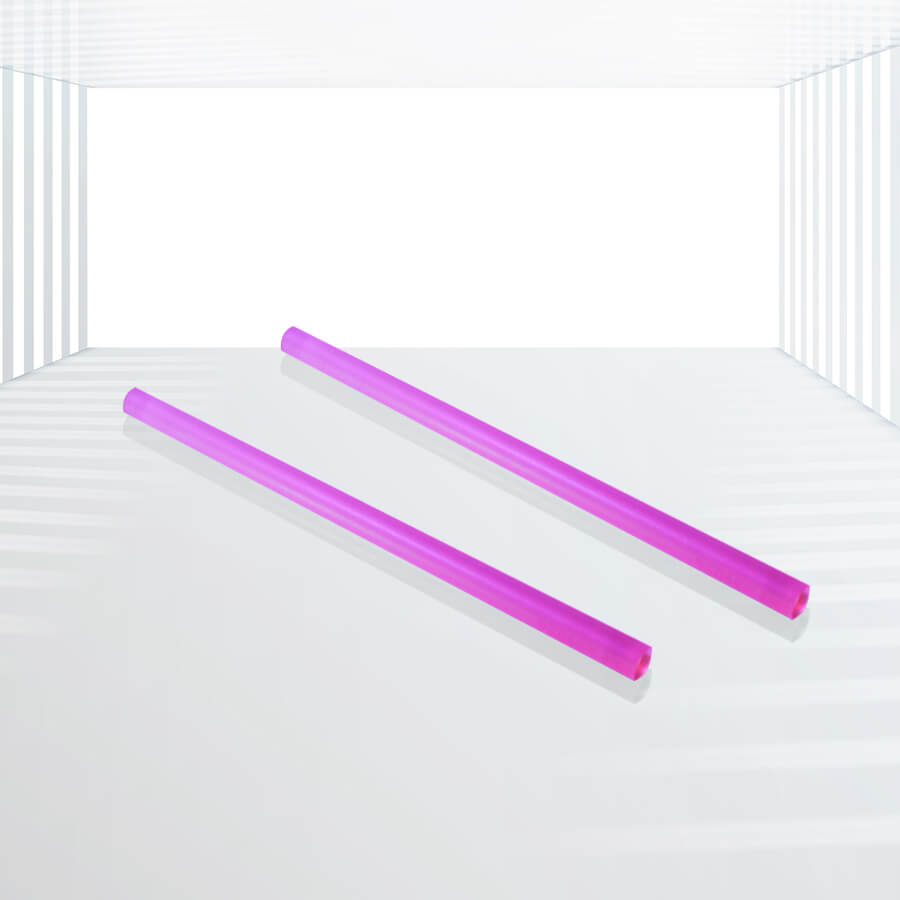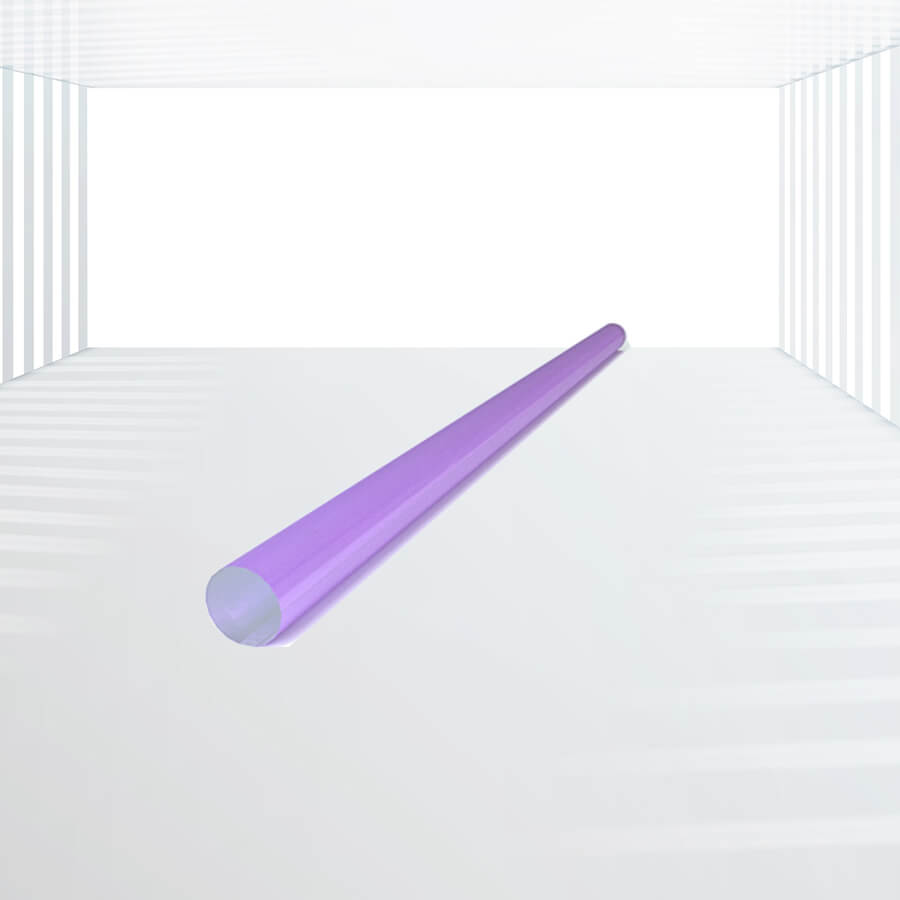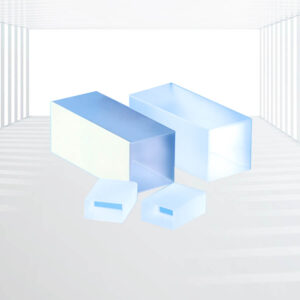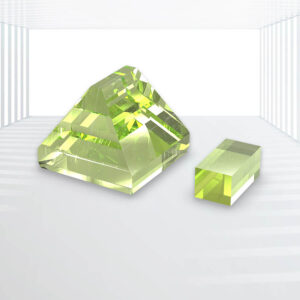Alexandrite Laser Crystal
High thermal shock resistance: Alexandrite can withstand high temperatures and even achieve higher laser gain and efficiency under elevated temperatures. It possesses excellent thermo-mechanical and thermo-optical properties, with five times higher thermal shock resistance compared to Nd:YAG.
High damage threshold: The alexandrite rods feature a substantial damage threshold, enabling them to endure more than 1.5 million pulses.
Excellent for 755nm long-pulsed: Alexandrite laser crystals emit a spectrum of wavelengths, with the most efficient being around 755nm. This wavelength is well-absorbed by hair and melanin, making it ideal for aesthetic laser systems such as hair removal and tattoo removal.
Q-switch laser: The ability of Alexandrite Laser Crystals to emit light across a wide range of wavelengths allows for flexibility in Q-switching applications. Different materials may have optimal Q-switching parameters at different wavelengths, so the tunability of Alexandrite Laser Crystals is beneficial for finding the best conditions for a specific application.
Applications: Medical Field, Industrial Field, Remote Sensing and Radar Technology, Atmospheric Research, Ultrafast Laser Technology, Efficient Low-Threshold Lasers, etc.
Alexandrite Laser Crystals are a type of laser crystal that is highly valued in the field of laser technology. They are named after the Alexandrite gemstone, which is a variety of chrysoberyl, due to their similar green color when exposed to light. The crystals are typically made from a synthetic form of chrysoberyl alexandrite, which is chosen for its unique optical properties.
Main Features:
- High thermal shock resistance: Alexandrite can withstand high temperatures and even achieve higher laser gain and efficiency under elevated temperatures. It possesses excellent thermo-mechanical and thermo-optical properties, with five times higher thermal shock resistance compared to Nd:YAG.
- High damage threshold: The alexandrite rods feature a substantial damage threshold, enabling them to endure more than 1.5 million pulses.
- Excellent for 755nm long-pulsed: Alexandrite laser crystals emit a spectrum of wavelengths, with the most efficient being around 755nm. This wavelength is well-absorbed by hair and melanin, making it ideal for aesthetic laser systems such as hair removal and tattoo removal.
- Q-switch laser: The ability of Alexandrite Laser Crystals to emit light across a wide range of wavelengths allows for flexibility in Q-switching applications. Different materials may have optimal Q-switching parameters at different wavelengths, so the tunability of Alexandrite Laser Crystals is beneficial for finding the best conditions for a specific application.
Applications:
1.Medical Field:
- Laser Hair Removal and Skin Treatments: Due to its spectral characteristics, Alexandrite laser is effective in targeting tissue cells with minimal damage to the epidermis, reducing post-treatment skin redness and allergic reactions.
- Vascular Lesion Treatments: Its deep penetration capability makes Alexandrite laser a valuable tool in treating vascular lesions.
2.Industrial Field:
- Precision Processing: Alexandrite lasers, with their high power and fast repetition rates, are ideal for precision micro-processing and marking applications.
- Laser Marking: The tunable wavelength and high power of Alexandrite lasers make them suitable for laser marking tasks.
3.Remote Sensing and Radar Technology: Alexandrite laser crystals are also utilized in remote sensing and radar technology, leveraging their unique spectral properties.
4.Atmospheric Research: Recent research has highlighted the value of Alexandrite laser crystals in atmospheric studies. For instance, in the European “GALACTIC” project, high-power Alexandrite lasers and coatings were developed for investigating atmospheric and Earth surface changes, including coastline mapping, storm surge modeling, and seabed surveying.
5.Ultrafast Laser Technology: Alexandrite crystals have significant potential in generating ultrafast laser pulses. Extensive research is being conducted globally to explore their application in laser precision processing, grating writing, and other fields.
6.Efficient Low-Threshold Lasers: Given its excellent thermal-mechanical properties, high thermal conductivity, and high damage threshold, Alexandrite crystal is expected to enable the realization of efficient, low-threshold continuous-wave lasers.
Properties:
| Property | Value |
| Chemical Formula | Cr3+:BeAl2O4 |
| Lattice Constants (Angstrom) | a = 5.476, b = 9.404, c = 4.427 |
| Molecular Weight | 127.01 g/mole |
| Hardness (Mohs) | 8.5 |
| Laser Wavelength Range | 700 – 855 nm |
| Pump Wavelength Range | 630 – 685 nm |
| Intrinsic Loss | 0.06% cm^-1 |
| Crystal System | Orthorhombic |
| Refractive Index (@750 nm) | a = 1.7367, b = 1.7241, c = 1.7346 |
| Thermal Expansion Coefficient (x 10^-6/K) | a = 5.9 x 10^-6/K, b = 6.1 x 10^-6/K, c = 6.7 |
| Vickers Hardness | 2000 kg/mm^2 |
| Melting Point | 1870 °C |
| Thermal Conductivity | 0.23 W/cm•K |
| Density | 3.7 g/cm^3 |
| Young’s Modulus | 469 GPa |
| Thermal Shock Resistance | 35 – 74 W/cm |
| dn/dT (Thermal Optical Coefficient) | 8 x 10^-6/K |











